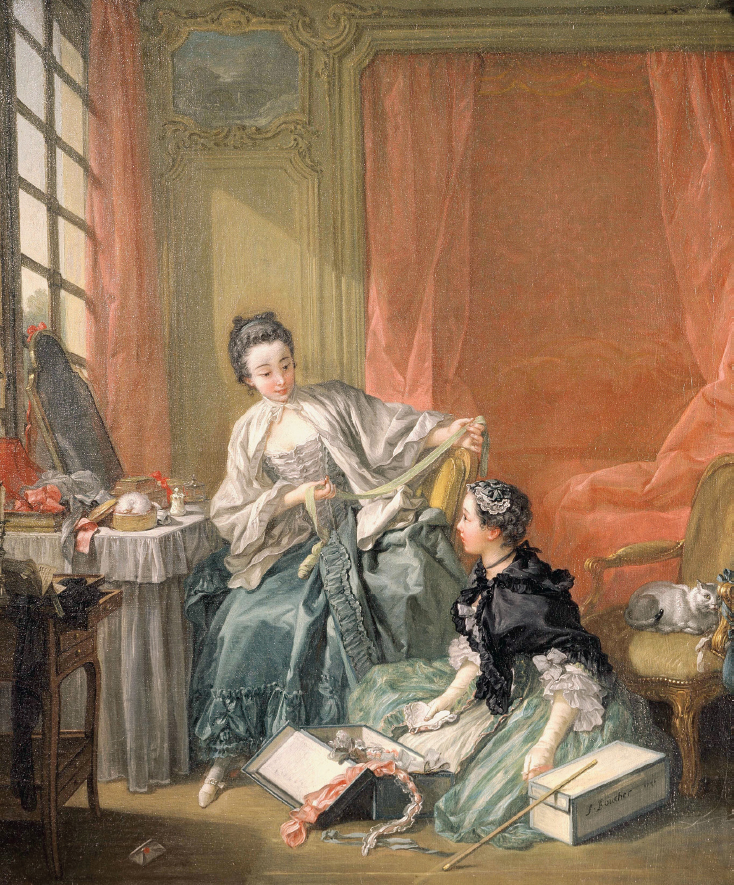Toward a Consumer Society
Along with foodstuffs, all manner of other goods increased in variety and number in the eighteenth century. This proliferation led to a growth in consumption and new attitudes toward consumer goods so wide-
Increased demand for consumer goods was not merely an innate response to increased supply. Eighteenth-
Clothing was one of the chief indicators of the growth of consumerism. Shrewd entrepreneurs made fashionable clothing seem more desirable, while legions of women entering the textile and needle trades made it ever cheaper. As a result, eighteenth-
Cheaper copies of elite styles made it possible for working people to aspire to follow fashion for the first time. The spread of fashion challenged the traditional social order of Europe by blurring the boundaries between social groups and making it harder to distinguish between noble and commoner on the bustling city streets.

CONNECTIONS: In what ways does the fashion merchant’s attire provide evidence of the consumer revolution of the eighteenth century? Compare this image to the painting of the serving girl (page 550). What contrasting images of the working woman do these two images present?
Women took the lead in the spread of fashion. Parisian women significantly out-
Changes in outward appearances were reflected in inner spaces as new attitudes about privacy and intimate life also emerged. Historians have used notaries’ probate inventories to peer into ordinary people’s homes. In 1700, the cramped home of a modest family consisted of a few rooms, each of which had multiple functions. In the eighteenth century, families began attributing specific functions to specific rooms. They also began to erect inner barriers within the home to provide small niches in which individuals could seek privacy.
New levels of comfort and convenience accompanied this trend toward more individualized ways of life. In 1700, a meal might be served in a common dish, with each person dipping his or her spoon into the pot. By the end of the eighteenth century, even humble households contained a much greater variety of cutlery and dishes, making it possible for each person to eat from his or her own plate. More books and prints, which also proliferated at lower prices, decorated the shelves and walls. Improvements in glassmaking provided more transparent glass, which allowed daylight to penetrate into gloomy rooms. Cold and smoky hearths were increasingly replaced by more efficient and cleaner coal stoves. Rooms were warmer, better lit, more comfortable, and more personalized, and the spread of street lighting made it safer to travel in cities at night.
Standards of bodily and public hygiene also improved. Public bathhouses, popular across Europe in the Middle Ages, had gradually closed in the early modern period due to concerns over sexual promiscuity and infectious disease. Many Europeans came to fear that immersing the body in hot water would allow harmful elements to enter the skin. From the mid-
The scope of the new consumer economy should not be exaggerated. These developments were concentrated in large cities in northwestern Europe and North America. Even in these centers, the elite benefited the most from new modes of life. This was not yet the society of mass consumption that emerged toward the end of the nineteenth century with the full expansion of the Industrial Revolution. The eighteenth century did, however, lay the foundations for one of the most distinctive features of modern Western life: societies based on the consumption of goods and services obtained through the market in which individuals form their identities and self-
>QUICK REVIEW
What connections existed between European overseas colonies and the emergence of the new European consumer economy?